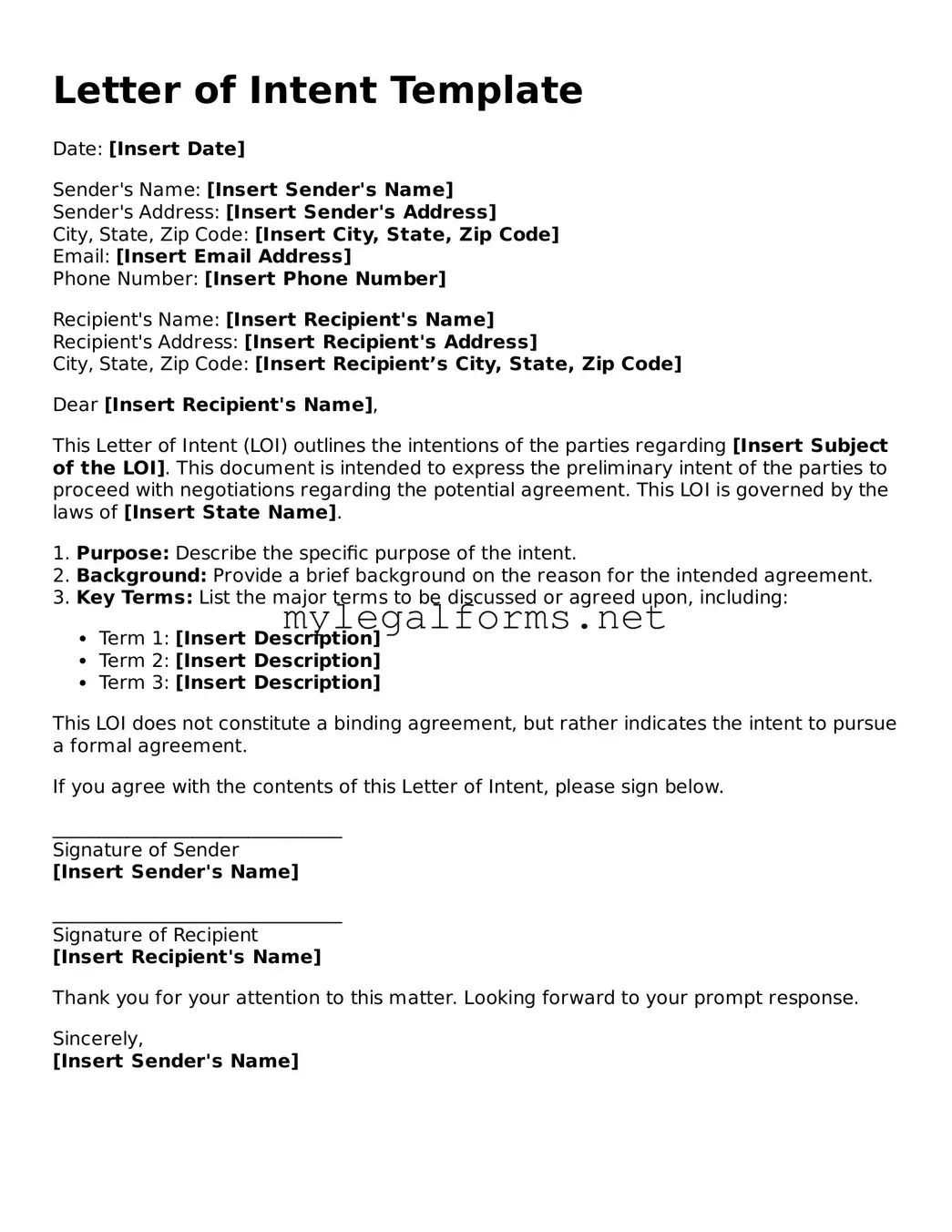Letter of Intent Template
Date: [Insert Date]
Sender's Name: [Insert Sender's Name]
Sender's Address: [Insert Sender's Address]
City, State, Zip Code: [Insert City, State, Zip Code]
Email: [Insert Email Address]
Phone Number: [Insert Phone Number]
Recipient's Name: [Insert Recipient's Name]
Recipient's Address: [Insert Recipient's Address]
City, State, Zip Code: [Insert Recipient’s City, State, Zip Code]
Dear [Insert Recipient's Name],
This Letter of Intent (LOI) outlines the intentions of the parties regarding [Insert Subject of the LOI]. This document is intended to express the preliminary intent of the parties to proceed with negotiations regarding the potential agreement. This LOI is governed by the laws of [Insert State Name].
1. Purpose: Describe the specific purpose of the intent.
2. Background: Provide a brief background on the reason for the intended agreement.
3. Key Terms: List the major terms to be discussed or agreed upon, including:
- Term 1: [Insert Description]
- Term 2: [Insert Description]
- Term 3: [Insert Description]
This LOI does not constitute a binding agreement, but rather indicates the intent to pursue a formal agreement.
If you agree with the contents of this Letter of Intent, please sign below.
_______________________________
Signature of Sender
[Insert Sender's Name]
_______________________________
Signature of Recipient
[Insert Recipient's Name]
Thank you for your attention to this matter. Looking forward to your prompt response.
Sincerely,
[Insert Sender's Name]
